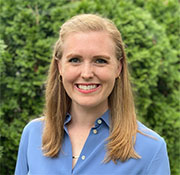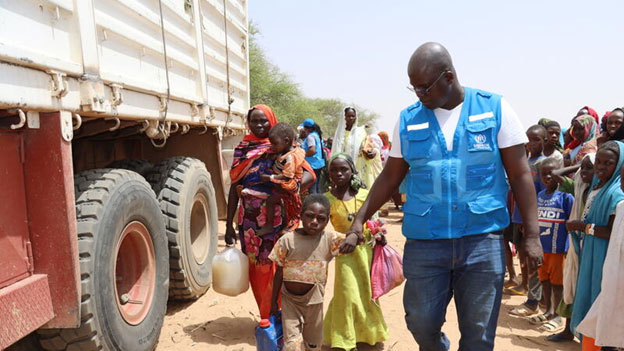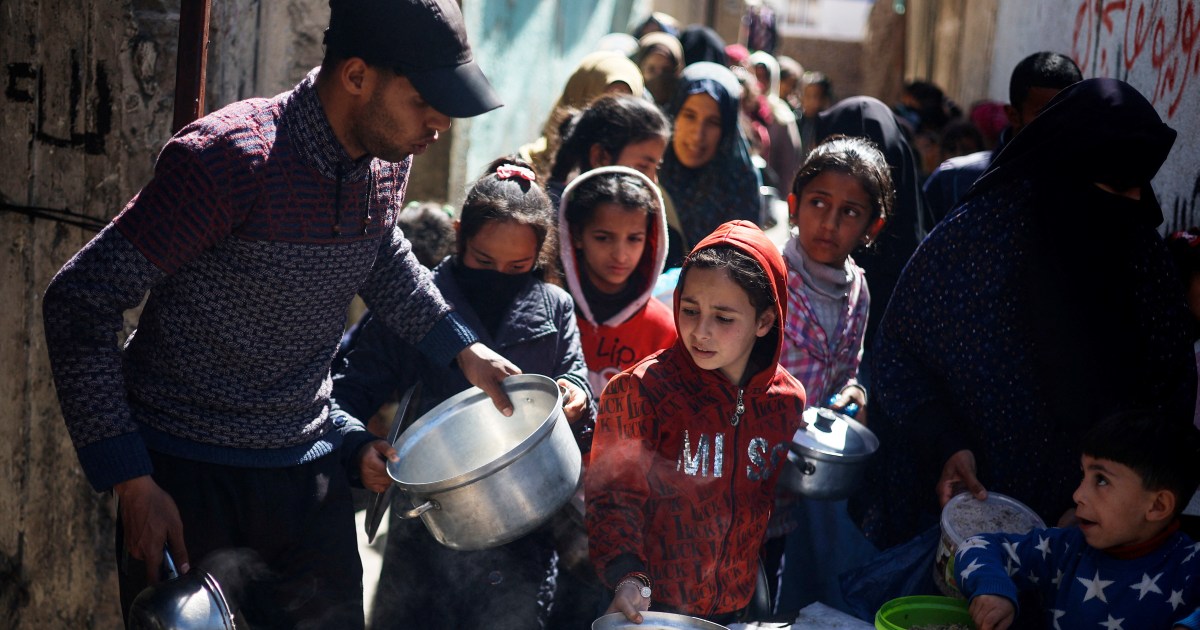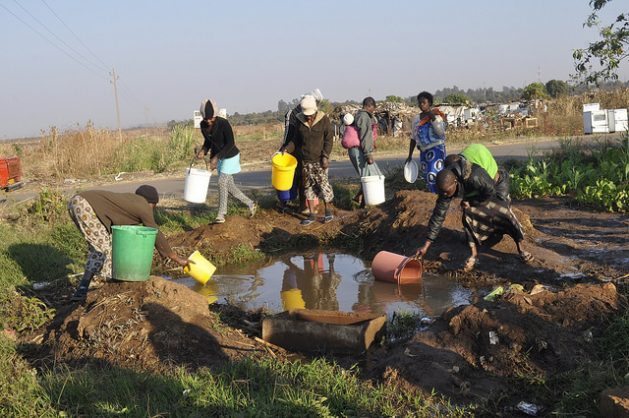Want to Prevent Atrocities? Think Locally. Act Locally — Global Issues
Credit: UNHCR/Aristophane Ngargoune
ARLINGTON, Virginia, Aug 31 (IPS) – When I first travelled to the Middle Belt of Nigeria, I listened to harrowing tales of murdered family members, physical injury, sexual violence, displacement, and hopelessness. In the years that have passed, these stories have only continued to stack up.
Estimates of those killed in communal violence in this region over the past five years vary from 5,000 to well over 25,000 – but the numbers only tell part of the story. They don’t tell the story of a small village in Benue state, where gunmen stormed a Catholic Church during mass, shooting two priests and 17 parishioners to death.
They don’t tell the story of the 14 year old Muslim boy who was beheaded by a mob in Plateau state in retaliation to previous attacks suspected to be committed by Fulani herdsmen.
To date, these atrocities and many more like them have been allowed to continue and expand – leaving death and destruction across the country.

They also don’t tell the story of the individuals on the frontlines who are protecting their neighbors, friends, and families by choosing to stop the violence: The young Fulani herders trained as “peace ambassadors” who read on Facebook “we need to hunt down the Fulani and kill all of them along with their cattle; we need to kill all Muslims,” and then instead of revenge, continued to approach and engage their peers to lay down their weapons.
And it doesn’t tell the story of the young people from farming communities in Riyom, who built relationships in inter-cultural dialogue that created the foundation of their resistance to politicians who offered payment and arms in return for them to attack Fulani herders ahead of the local elections.
These are just anecdotes from the frontlines of one long simmering conflict. But they are backed up by mounting evidence and data that the best way to prevent atrocities is to act early — and act locally.
Atrocity “prevention” too often starts after armed conflicts have already begun to spiral. Instead, policymakers must take proactive action to support local peacebuilding groups in regions that show the common early warning signs of atrocity.
There are both long-term structural conditions that create situations of atrocity vulnerability, as well as triggering events that accelerate violence. Yet, atrocity “prevention” often starts too late – after atrocities have begun.
Despite commitments by governments including the United States to prevention, atrocities are underway in thirteen countries in 2023 with millions of lives at risk. Violent conflicts are at a 30-year high, and the UNHCR has estimated that more than 115 million people will be forcibly displaced before the end of 2023.
Understanding the indicators of potential atrocities empowers those working and living in these contexts to transform them and prevent violence.
Looking at the last decade of experience of countries that are at high risk of atrocity: Afghanistan, Central African Republic, Democratic Republic of the Congo, Guinea, Mali, Myanmar, Nigeria, South Sudan, Syria, and Yemen, we can see a clear relationship and connection between the challenges that people in these countries face, which are characterized by widespread social divisions, fractured relationships between government and citizens or among communities, exclusion of certain groups from political representation and resources, limited capacities to prevent or respond to violent conflicts, and constrained space for civil society.
There are, however, preventative solutions. In the Central African Republic, where the conflict between Seleka and anti-Balaka militias intensified religious divides programming efforts by Search for Common Ground focused on bridging social divides.
Within a year, 90% of participants in the capital city of Bangui were able to identify shared values, leading to increased mutual respect and a reduction in the retaliatory nature of conflict events.
This case serves as a powerful example of the importance of implementing initiatives such as social and cultural solidarity events, social change media, and collaborative community action projects to bridge divisions and foster understanding, while investing in inclusive structures for conflict response during stable periods to build sustainable peace.
The international community’s historical approach to crisis moments in places such as Afghanistan, Yemen, Myanmar, and South Sudan has been to restrict diplomatic engagement, introduce sanctions, and/or drastically reduce non-humanitarian assistance. Yet, it is precisely in these moments of upheaval that the risk for atrocities grows.
Sanctions and other response mechanisms should not preclude the ability of local organizations to access resources and support in moments of crisis. Instead, it is crucial to amplify and support the work of communities involved in de-escalation efforts, whenever possible and safe.
In South Sudan, empowering community members from Magwi and Nimule counties to monitor conflict trends and provide early responses has yielded significant results. Trained conflict monitors and peace committee members reported a drastic reduction in road attacks, decreased cases of domestic violence and rape, and mitigated violence surrounding land issues during the return of individuals from IDP and refugee camps.
While the need for action is urgent, programmatic and financial commitments from the international community should be enduring and flexible. Realizing returns on investment in social cohesion requires long-term commitment and programming cycles that go beyond 18-24 months.
This was exemplified in Plateau State, Nigeria, where donors supported the development of conflict monitoring and community dialogue platforms for over five years across a variety of projects. Over that period, 75% of the interventions reduced fatalities in their target locations.
Remarkably, during a surge in violence in 2018 and 2019, the areas with established peace architectures deployed trained individuals to de-escalate conflicts and share information, resulting in fewer instances of violence compared to neighboring regions.
Sustained investment in social cohesion is needed to establish peace committees, shift narratives, and build trust, while rapid response programs can effectively address emerging crises with different disbursement methods.
Early action is crucial to the prevention agenda. It requires a dual commitment to reduce environments that enable violence and to create rapid de-escalation response capacities. Now is the time for such commitment, as the prevention of atrocities remains a shared responsibility among the international community.
Recognizing warning signs, investing in inclusive peacebuilding, and fostering social cohesion early is crucial to uproot and transform the seeds of violence.
Katie Smith is Global Policy Specialist at Search for Common Ground. She is the author of a new report on “Polarization, Social Cohesion, and Atrocities: Approaches for a Safer World.”
Source: Global Dispatches
IPS UN Bureau
© Inter Press Service (2023) — All Rights ReservedOriginal source: Inter Press Service
Check out our Latest News and Follow us at Facebook
Original Source






